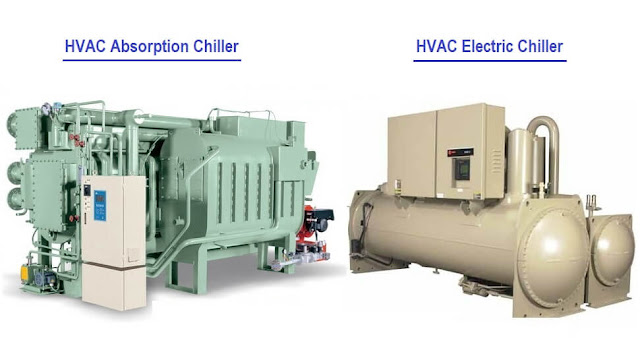Industrial processes produce significant heat, which must
dissipate to protect sensitive equipment and finished products. The use of
chiller systems, which can be water or air-cooled, is a well-established method
of monitoring and regulating temperatures at optimal levels. This blog will
contrast a water-cooled chiller system with an air-cooled chiller system.
Air Cooled Chillers
vs Water Cooled Chillers
Although air-cooled and water-cooled chillers remove unwanted heat from manufacturing processes, they differ
significantly. Air-cooled chillers have condensers that use ambient air to lower
refrigerant temperatures. Water-cooled chillers use water's high heat capacity
to facilitate refrigerant chilling.
Initial Expenses
Air-cooled chillers appear to be more expensive than water-cooled
units at first glance due to their design and operation. It includes
installation costs for air ducts, fans, and thermoregulation controls. You can
check the chiller price in India.
Operating Expenses
Furthermore, air-cooled chiller systems use more energy to power
the fans, which aids in cooling, resulting in higher electric bills.
On the other hand, water-cooled chillers have higher long-term
operational costs because most of these chiller types require the installation
of cooling towers.
Maintenance Fees
After accounting for chiller maintenance costs such as water
quality testing, mandatory water treatment, and refrigeration system operating
costs, water-cooled chiller operating costs can skyrocket.
Water chillers, unlike air chillers, require cooling towers, which
necessitates costly maintenance such as condenser-tube cleaning, freeze
protection, water treatment, and tower maintenance.
Capacity
Air-cooled chillers range in size from 7.5 to 500 tons. On the
other hand, water-cooled chillers have a higher cooling capacity of 10 - 4,000
tons. You can buy ac online with the required capacity.
Efficiency
Water-cooled chillers outperform air-cooled models in terms of
efficiency. The efficiency of an air-cooled chiller depends on the temperature
of the ambient air used in its cooling system. The high temperature of the
circulating cooling air will lessen the efficiency of an air-cooled chiller.
The process of repeatedly pumping air through the chiller heat exchanger to reach the desired coolant temperatures will ultimately use more energy.

Comments
Post a Comment